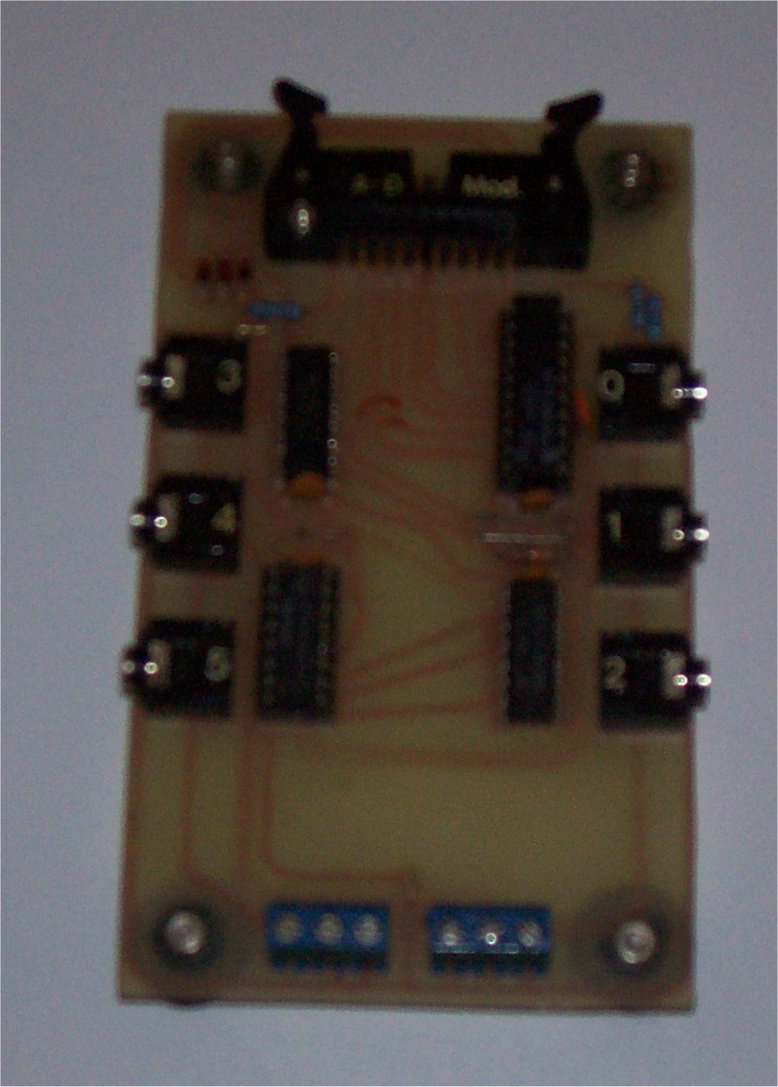
It also had three expansion card slots.
Please note plug in and remove card when the computer is turned of to avoid short circuits. It is advisable to use an old out of data computer to run this card.
It addresses PC prototype hexadecimal address &300 for data and &301 for control using Pascals Input/Output binary command Port. It uses 3 SSI (small scale intergration) IC's: 74LS32, 74LS30, and 74LS14. With 3 10 Nano Farod ceramic capacitors.
Note: "The Master IC Cookbook" available from amazon.co.uk lists all TTL and CMOS Logic IC's used by this Interface System.

IC's go in on top in Side B thus: - B - - - 74LS32 + 104 ceramic capacitor + width 5 x 4 height diagonal ribbon cable connector - - 74LS30 + 104 " - - 74LS14 + 104 " - - - Some through pin connectors are required as well.
| PC Inteface Card - Side A Transparency: | PC Interface Card - Side B Transparency |
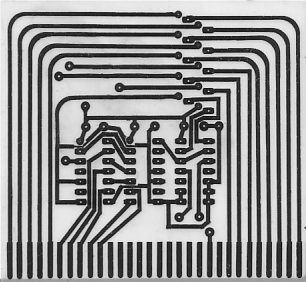 |
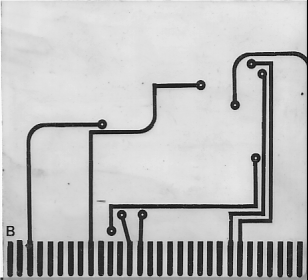 |
Pinout connections: D0-D7, RD (negative logic pulse), WR (negative logic) A0-A4, Interrupt 4, Interrupt 5, 12V, 5V, 0V
The Read line can activate the input channel reading what ever number is of the
data bus (D0-D7).
The Write line activates a latch the writes data to the latch IC so it can display LED's for example.
The module uses IC 74LS138 to decode the 5-line x32 module addresses plus 3 1N4148 diode, 1 1K resistor diode clamp logic. It has input latches 74LS244 and 74HC367, and output latches 74LS273 and 74LS174. It also has a R-C reset of 1K and 100µF resitor and capacitor so the output latches are at 0. The chips have 4 10 Nano Farod ceramic capacitors assoiated with them.
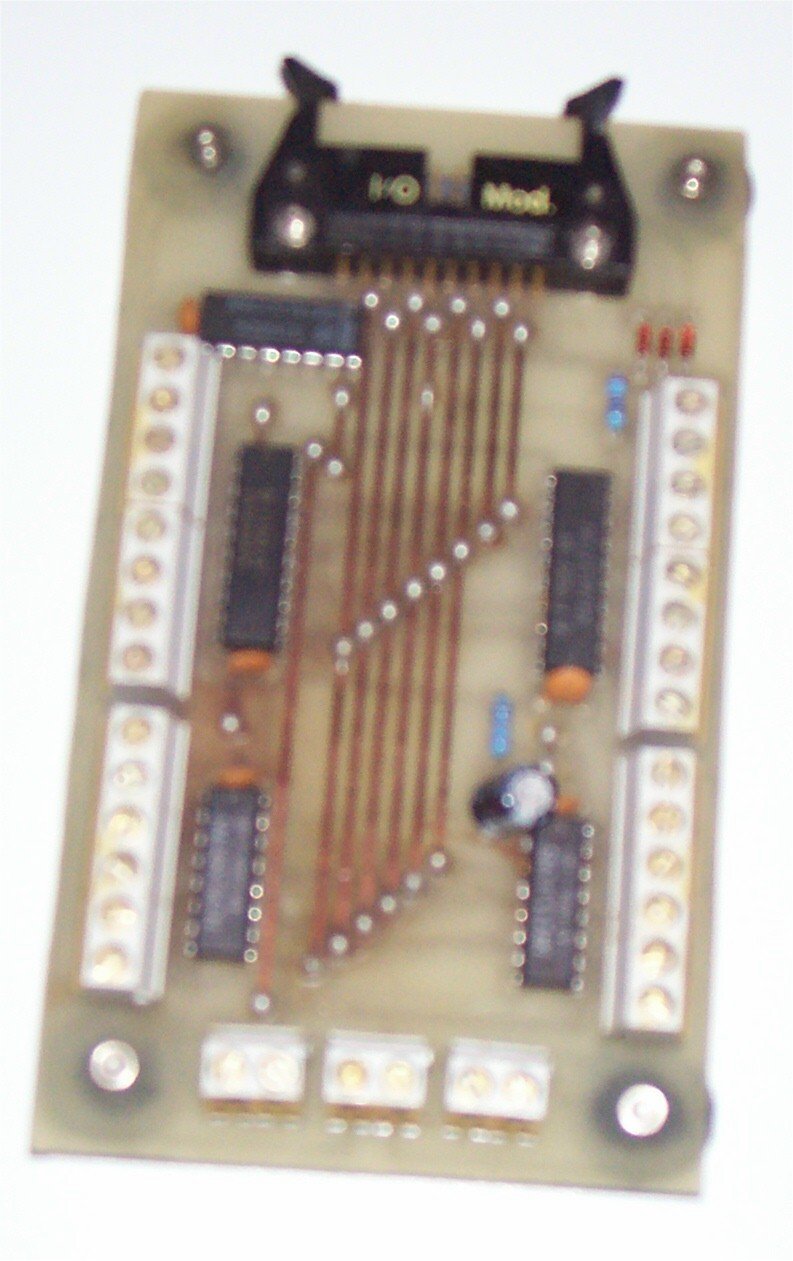
| I/O Module - Side A Transparency: | I/O Module Card - Side B Transparency |
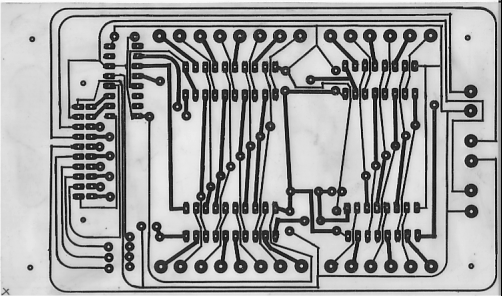 |
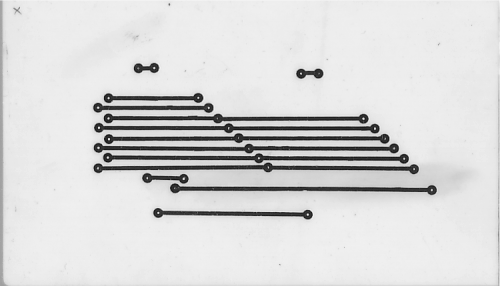 |
